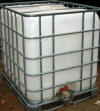Calcium Chloride Hexahydrate & Solution Manufacturers, MSDS Sheet |
| Mubychem Limited of USA & India is a pioneer manufacturers suppliers exporters & importers of chemicals including Hydraulic fracturing stimulation & oil well production chemicals, Pharmaceutical excipients, Fragrance & flavor chemicals. Muby Chem Ltd has several manufacturing facilities and toll manufacturers across the globe. We have offices warehouses and representatives in Houston & Midland Texas and Chicago Illinois USA. |
| Our suppliers have accreditations like FDA - GMP-GLP approval, ISO-9001, ISO-22000 HACCP, Kosher & Halal Certification. We offer Commercial Pure Pharmacopoeia Analytical Reagent & Food Grade of Chemicals and do Toll Manufacturing for Oil well drilling fracking fracturing and others. |
Calcium Chloride BP USP ACS Analytical Reagent Food Grade
Calcium Chloride Anhydrous Fused
Dihydrate Hexahydrate Solution IP Grade Manufacturers Specifications & Uses
For MSDS Sheet Click
CaCl2 Anhydrous MSDS Sheet
CaCl2 Fused Dihydrate MSDS Sheet
CaCl2 Hexahydrate Solution MSDS Sheet
Calcium Chloride Hexahydrate (Solution) MSDS Sheet, Material safety Data Sheet
1. Product Identification
Synonyms: Calcium Dichloride Hexahydrate; Calcium Di Chloride
Hexahydrate
CAS No.: 7774-34-7
Molecular Weight: 210.08
Chemical Formula: CaCl2.6H2O (Calcium Chloride Hexahydrate)
(Solution will have more water)
2. Hazards Identification
GHS, Globally Harmonized System Classification in accordance with 29 CFR 1910

Signal Words: Caution
Hazard statements:
H315: Causes skin irritation.
H319: Causes serious eye irritation.
Precautionary statements:
P261: Avoid breathing dust/ fume/ gas/ mist/ vapours/ spray.
P262: Do not get in eyes, on skin, or on clothing.
P280: Wear protective gloves/protective clothing/eye protection/face
protection.
P305+P351+P338: IF IN EYES: Rinse cautiously with water for several minutes.
Remove contact lenses, if present and easy to do. Continue rinsing.
P337+P313: If eye irritation persists: Get medical advice/ attention.
Emergency Overview
WARNING! CAUSES IRRITATION TO SKIN, EYES AND RESPIRATORY TRACT. HARMFUL
IF SWALLOWED OR INHALED.
OSHA Hazards: Irritant
3. Composition/Information on Ingredients
Ingredient: Calcium Chloride Hexahydrate
CAS No.: 7774-34-7
Percent: 97 - 100%
(Solution will have more water)
4. First Aid Measures
Always seek medical attention after first aid measures are provided.
Inhalation: Remove to fresh air. If not breathing, give artificial
respiration. If breathing is difficult, give oxygen. Get medical attention.
Ingestion: Never give anything by mouth to an unconscious person. Get
medical attention.
Skin Contact: Wipe off excess material from skin then immediately
flush skin with plenty of water for at least 15 minutes. Remove contaminated
clothing and shoes. Get medical attention. Wash clothing before reuse.
Thoroughly clean shoes before reuse.
Eye Contact: Immediately flush eyes with plenty of water for at least
15 minutes, lifting lower and upper eyelids occasionally. Get medical
attention immediately.
Note to Physician: Symptomatic and supportive treatment is
recommended.
5. Fire Fighting Measures
Flammability of the Product: Non-flammable.
Products of Combustion: Not available.
Fire: Calcium Chloride Hexahydrate is not considered to be a fire
hazard.
Explosion: Calcium Chloride Hexahydrate is not considered to be an
explosion hazard.
Fire Extinguishing Media: Use any means suitable for extinguishing
surrounding fire.
Special Information: In the event of a fire, wear full protective
clothing and NIOSH-approved self-contained breathing apparatus with full
face piece operated in the pressure demand or other positive pressure mode.
At high temperatures or when moistened under fire conditions, it may produce
toxic or irritating fumes.
6. Accidental Release Measures
Small Spill: Ensure adequate ventilation. Use appropriate tools to
put the spilled material in a convenient waste disposal container. Finish
cleaning by spreading water on the contaminated surface and dispose of
according to local and regional authority requirements.
Large Spill: Do not let the product enter drains. Finish cleaning by
spreading water on the contaminated surface and allow evacuating through the
sanitary system.
7. Handling and Storage
Wear suitable protective clothing. In case of insufficient ventilation,
wear suitable respiratory equipment.
Avoid contact with skin and eyes. Avoid formation of dust and aerosols. Wash
hands thoroughly after handling. Provide appropriate exhaust ventilation. If
you feel unwell, seek medical attention.
Keep Calcium Chloride Hexahydrate in a tightly closed container, stored in a
cool, dry, ventilated area. Protect against physical damage. Moist calcium
chloride and concentrated solutions can corrode steel. When exposed to the
atmosphere, it will absorb water and form a solution.
8. Exposure Controls/Personal Protection
Airborne Exposure Limits: None established.
Ventilation System: A system of local and/or general exhaust is
recommended to keep employee exposures as low as possible. Local exhaust
ventilation is generally preferred because it can control the emissions of
the contaminant at its source, preventing dispersion of it into the general
work area.
Personal Respirators (NIOSH Approved): For conditions of use where
exposure is apparent and engineering controls are not feasible, a
particulate respirator may be worn. For emergencies or instances where the
exposure levels are not known, use a full-face positive-pressure,
air-supplied respirator.
Skin Protection: Wear protective gloves and clean body-covering
clothing.
Eye Protection: Use chemical safety goggles and/or full face shield
where dusting or splashing of solutions is possible. Maintain eye wash
fountain and quick-drench facilities in work area.
Other Control Measures: Maintain good housekeeping in work area.
Deposits on floors and other surfaces may cause the surfaces to become
slippery and present safety hazards. Handle in accordance with good
industrial hygiene and safety practice. Wash hands after handling.
9. Physical and Chemical Properties
Appearance: Calcium Chloride Hexahydrate is white crystals or
powder or granules.
Odor: It is odorless.
Solubility: It is freely soluble in water.
pH: 5.0 - 9 at 10% solution at 25C (77F)
Density: 1.50 g/cm3 as liquid at 30C.
Molecular formula: CaCl2•6H2O
Molecular weight: 210.08
% Volatiles by volume @ 21C (70F): 0
Boiling Point: > 1600C (> 2912F)
(Solution will have different B.P.)
Melting Point: 29C (84F) for Calcium Chloride Hexahydrate.
(Solution will have different M.P.)
Vapor Density (Air=1): No information found.
Vapor Pressure (mm Hg): No information found.
10. Stability and Reactivity
Stability: Calcium Chloride Hexahydrate is stable under ordinary
conditions of use and storage. Substance will pick up moisture from the air
and go into solution if exposed in open containers.
Hazardous Decomposition Products: It emits toxic chlorine
fumes when heated to decomposition. It may form hydrogen chloride in
presence of sulfuric or phosphoric acids or with water at elevated
temperatures.
Hazardous Polymerization: Will not occur.
Incompatibilities: Methyl vinyl ether, water, zinc, bromine
trifluoride, mixtures of lime and boric acid, barium chloride, and 2-furan
percarboxylic acid. Metals will slowly corrode in aqueous calcium chloride
solutions. Aluminum (and alloys) and yellow brass will be attacked by
calcium chloride.
Conditions to Avoid: Incompatibles.
11. Toxicological Information
Toxicity to Animals: LD50: Not available. LC50: Not available.
Carcinogenic Effects: Not available.
Mutagenic Effects: Not available.
Teratogenic Effects: Not available.
Developmental Toxicity: Not available.
The substance may be toxic to heart. Repeated or prolonged exposure to the
substance can produce target organs damage.
Chronic Effects on Humans: May cause damage to the following organs:
heart.
Other Toxic Effects on Humans: Hazardous in case of skin contact
(irritant), of ingestion, of inhalation.
Special Remarks on Chronic Effects on Humans: May affect genetic
material.
Acute Potential Health Effects:
Skin: Causes skin irritation with possible burning sensation especially
if skin is wet or moist.
Eyes: Causes eye irritation. Inhalation: Causes respiratory tract and
mucous membrane irritation with burning sensation and pain in nasal
cavities, occasional nose bleeding and tickling in the throat.
Ingestion: May be harmful if swallowed. May cause severe
gastrointestinal tract irritation with nausea, and vomiting. May cause
cardiac disturbances (slowing of heart rate, arrhythmia, tachycardia, heart
fibrillation). May affect behavior (somnolence, convulsions). May affect the
musculoskeletal system, blood, brain, heart, and metabolism (weight loss).
Chronic Potential Health Effects:
12. Ecological Information
Environmental Fate: Based on available information Calcium
Chloride Hexahydrate will not biodegrade or bio accumulate.
Environmental Toxicity: The material is not considered as
environmental hazard.
13. Disposal Considerations
Whatever cannot be saved for recovery or recycling should be managed in an appropriate and approved waste disposal facility. Processing, use or contamination of this product may change the waste management options. State and local disposal regulations may differ from federal disposal regulations. Dispose of container and unused contents in accordance with federal, state and local requirements. Small amounts of this material may be suitable for sanitary sewer or trash disposal.
14. Transport Information
Calcium Chloride Hexahydrate is not regulated.
15. Regulatory Information
USA OSHA Hazards
Irritant
SARA 302 Components
No chemicals in this material are subject to the reporting requirements
of SARA Title III, Section 302.
SARA 313 Components
This material does not contain any chemical components with known CAS
numbers that exceed the threshold reporting levels.
SARA 311/312 Hazards
Acute Health Hazard
California Prop. 65 Components
This product does not contain any chemicals known to State of California
to cause cancer, birth defects, or any other reproductive harm.
Clean Air Act:
This material does not contain any hazardous air pollutants.
This material does not contain any Class 1 Ozone depletors.
This material does not contain any Class 2 Ozone depletors.
Clean Water Act:
None of the chemicals in this product are listed as Hazardous Substances
under the CWA.
None of the chemicals in this product are listed as Priority Pollutants
under the CWA.
None of the chemicals in this product are listed as Toxic Pollutants under
the CWA.
Canada - DSL/NDSL
CAS# 10043-52-4 is listed on Canada's DSL List.
WHMIS (Canada): CLASS D-2B: Material causing other toxic
effects (TOXIC).
16. Other Information
Disclaimer:
***********************************
Our company provides this Calcium Chloride Hexahydrate SDS sheet in good faith but makes no representation as to its comprehensiveness or accuracy. This
Calcium Chloride Hexahydrate MSDS sheet is intended only as a guide to the appropriate precautionary handling of the material by a properly trained person using this
product. The above information has been compiled from various sources and has the possibility of discrepancy and being out-dated information. Individuals receiving
the information must exercise their independent judgment and do further search in determining its appropriateness for a particular purpose. In no case shall our
company be liable to loss or damages by the product user.
***********************************
Suppliers Manufacturers Exporters Importers between USA Canada UAE Europe South Africa Tanzania Kenya Uganda Egypt Nigeria Turkey Mexico Brazil Argentina Chile Dubai China India etc.
Copyright and Usual Disclaimer is Applicable.
If you feed a dog with your hand, it will never bite you. That is the principal difference between a dog and a man.








